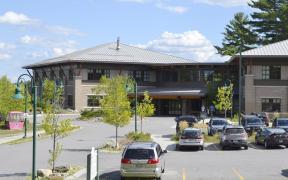What is a bunion?
A bunion is a bony growth that forms along the outside of the joint of the big toe. As the bunion moves outward, it pushes the big toe inward toward the next toe. Bunions can become red, swollen, and painful. Smaller bunions can develop on the outside of the little toe. These are called bunionettes. Bunions are more common in women. They don’t go away and usually get worse with age.
What causes bunions?
Bunions may develop for many reasons:
- Bunions may run in the family.
- The structure of the foot – low arches, flat feet, or the way you walk may lead to bunions.
- Another medical condition such as arthritis can increase your risk of bunions.
- Wearing high heels or tight-fitting pointed-toe shoes can result in bunions.
How can I take care of my bunions at home?
There are steps you can take at home to ease the development and symptoms of bunions:
- Wear wide-toed comfortable, flat shoes.
- Visit a shoe store that will measure your foot and suggest the right shoes.
- Protect the bunion with a bunion pad (available at the drug store).
- Use shoe inserts to make sure that your feet are aligned properly in your shoes.
- Use ice packs or warm soaks to relieve pain.
- Take an over-the-counter, anti-inflammatory medication if advised by your provider.
If pain and discomfort interfere with normal activity, your healthcare provider may recommend surgery to correct your bunion.
Can bunions be treated with surgery?
Surgery for the correction of a bunion is called a bunionectomy. An orthopedic surgeon or podiatrist usually performs bunion surgery.
The type of procedure will depend on the degree of deformity. Bunion surgery is usually done on an outpatient basis under local anesthesia. Recovery from bunion surgery can take up to six months.


























